In addition to Modernist Cuisine and Keys to Good Cooking there are so many new books appearing this fall, so to save you from too many blog posts I’ve collected them here in a single posting. These are all books that I find interesting from my popular food science perspective combined with a strong interest for the actual cooking! The books are, in order of appearance:
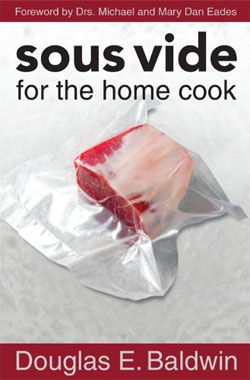 Sous Vide for the home cook (already available)
Sous Vide for the home cook (already available)
by Douglas Baldwin
Long time followers of Khymos will remember Douglas Baldwin whom I interviewed in 2009. Furthermore he is the author of the perhaps best paper on sous vide cooking to appear so far. The present book Sous Vide for the home cook has been written specially for the company Eades (who makes the SousVide Supreme temperature controlled water bath – the first mass produced integrated sous vide solution targetet at the consumer market!), but the book is so general that it can be used with whatever sous vide setup you have, be it an expensive immersion circulator or a cheap beer cooler. Douglas let me read through one of the drafts to the book, and this is really the book to chose if you’re not interested in the science of sous vide. It’s got many recipes (although many of the sous vides recipes are duplicated by addition of many different sauces), but there were no pictures in early drafts that I saw.
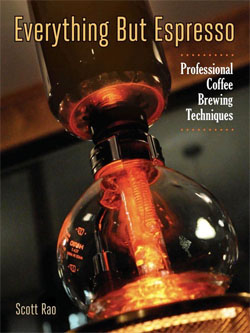 Everything But Espresso: Professional Coffee Brewing Techniques (already available)
Everything But Espresso: Professional Coffee Brewing Techniques (already available)
by Scott Rao
A while ago I picked up Scott Rao’s espresso handbook The Professional Barista’s Handbook: An Expert Guide to Preparing Espresso, Coffee, and Tea. This book explains everything you want to know about brewing espressos and steaming milk in text as well as excellent full color pictures (and the book even has chapters on drip coffee, French press and tea brewing as well). Together with Espresso Coffee: Professional Techniques by David Schomer these are the reference books on espresso brewing. It was therefore great to see that Scott Rao has recently written a book which is devoted to all the non-espresso coffee brewing techniques out there such as manual and automatic drip coffee, French press, steep & release and vacuum pot/siphon. There are also chapters on bean storage, grinding as well as some basic water chemistry.
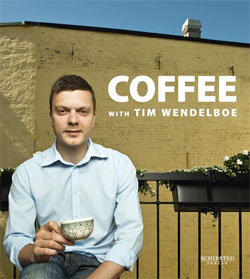 Coffee with Tim Wendelboe
Coffee with Tim Wendelboe
by Tim Wendelboe
While writing about coffee books there’s no way around Tim Wendelboe’s book on coffee which finally is available in English. I must admit that I have only leafed through the Norwegian version of the book and it’s certainly on my wish list. The book is intended for a broad coffee loving audience – no knowledge of science is required! Tim Wendelboe is a Norwegian coffee pioneer and award winning barista, and it was great fun visiting his shop to do the tests with salt and coffee. As of now it seems that the book is only available from Wendelboe’s webshop.
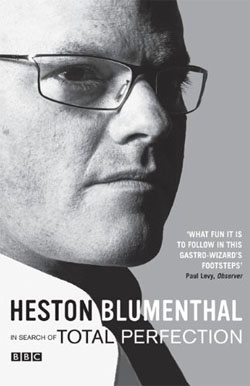 In Search of Total Perfection (already available)
In Search of Total Perfection (already available)
by Heston Blumenthal
This is a soft cover book combining Heston Blumenthal’s previous books In Search of Perfection and Further Adventures in Search of Perfection: Reinventing Kitchen Classics. If you own these, don’t get this book – if not, this new book is cheaper than bying the books separately. The dishes that Heston investigates in great detail are: fish and chips, roast chicken, spaghetti bolognese, steak and salad, pizza, sausages and mashed potatoes, black forest cake, treacle tart and ice cream, trifle, baked Alaska, fish pie, hamburger, Peking duck, chicken tikka masala, risotto and chilli con carne. Each dish was also featured in the BBC series that came along with the books (or was it the other way around?). To get an idea of the style and detail level, check out video clips from the series over at Youtube.
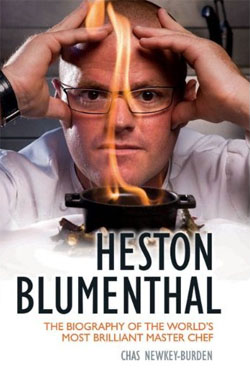 Heston Blumenthal: The Biography of the World’s Most Brilliant Master Chef (available)
Heston Blumenthal: The Biography of the World’s Most Brilliant Master Chef (available)
by Chas Newkey-Burden
The first part of The Big Fat Duck Cookbook retraces the beginnings of the restaurant and is in a sense autobiographical, but here’s the full story of Heston Blumenthal – a self-taught chef who turned the world of gastronomy and high end cooking on its head.
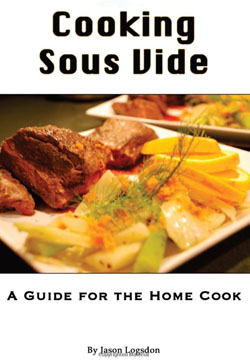 Cooking Sous Vide: A guide for the Home Cook (available)
Cooking Sous Vide: A guide for the Home Cook (available)
by Jason Logsdon
The author is the co-founder and main contributor to the website Cooking sous vide which has become a relatively large collection of sous vide related articles. There is also a blog where Jason keeps track of developments related to equipment and other sous vide information on the web. If you’re totally new to sous vide the book could be a good place to start, although I’d recommend you to take a look at what’s available on the website first.
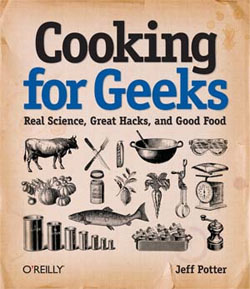 Cooking for Geeks: Real Science, Great Hacks, and Good Food (to appear August 3rd)
Cooking for Geeks: Real Science, Great Hacks, and Good Food (to appear August 3rd)
by Jeff Potter
Don’t let the tongue-in-cheek title make you skip this book. It covers kitchen gadgets, hydrocolloids, sous vide, protein denaturation, Maillard reactions and caramelization – too name a few. But what makes this book different from the rest is it’s style and language (ever heard about overclocking an oven to make it hot enough for pizza?) as well as the personal approach with a number of interviews with food experts including Hervé This and Harold McGee. And guess what – there’s even an interview with me in the book (even though I definitely don’t belong in the same food expert category as This and McGee…). You can find more information on the Cooking for geeks web site.
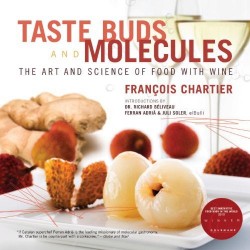 Taste Buds and Molecules: The Art and Science of Food With Wine (to appear September 28th)
Taste Buds and Molecules: The Art and Science of Food With Wine (to appear September 28th)
by Francois Chartier
I blogged about this book as it appeared in French in 2009. It’s written by Canadian sommelier Franí§ois Chartier (he has an extensive website). Basically what he does it to apply the principles of flavor pairing to food and wine. With help from Richard Béliveau from Agriculture and Agri-Food Canada and Martin Loignon from PerkinElmer he has analyzed wines and food and comes up with pairing suggestions based on this. For instance lamb’s characteristic flavour comes from thymol, an aromatic compound found in the oil of, yes, thyme. This flavour note is also associated with red wines from the southern Languedoc region of France, such as Minervois, Corbií¨res or St. Chinian. Chartier suggests that it may be well worth trying one of these in stead of the more obvious red Bordeaux.
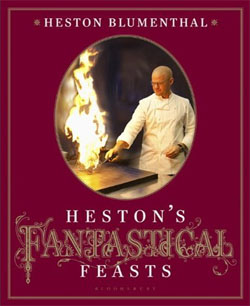 Heston’s Fantastical Feasts (to appear September 28th)
Heston’s Fantastical Feasts (to appear September 28th)
by Heston Blumenthal
In a British television series in 2009 Heston Blumenthal set of to prepare six feasts inspired by history, literature and legend: a Willy Wonka Feast, a Fairy Tale Feast, an Edwardian Feast, a Gothic Feast, a ’70s Feast, and a Feast of the Future. From the publisher: “Delving deep into the world of each dish, Blumenthal creates poison apples, transforms pumpkins into carriages, and builds Edwardian gingerbread houses with sugar windows. Scouring Italy for rare mushrooms and Switzerland for wild boar, he records the journeys and inspiration behind each meal, laying it all out in grandly illustrated detail. Witness his delectable riffs on Dr. Seuss’s Green Eggs and Ham and Roald Dahl’s Lickable Wallpaper, and even try the recipe if you dare.”
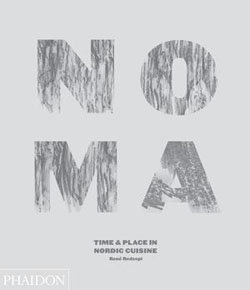 NOMA (to appear October 6th)
NOMA (to appear October 6th)
by Réne Redzepi
The restaurant Noma was founded by Réne Redzepi and Claus Meyer, and was voted Best restaurant in the world by Restaurant magazine in 2010. This alone should probably be a good enough reason to get the book, but there’s more: Claus Meyer was appointed adjunct professor of molecular gastronomy at The Royal Veterinary and Agricultural University of Copenhagen in 2006 (today part of University of Copenhagen). Back in 2004 he established a molecular gastronomy study group in cooperation with Thorvald Pedersen, a Danish chemist and life long food chemistry/molecular gastronomy enthusiast. And he still works together with the Danish scientists who recently co-authored a major review on molecular gastronomy with Peter Barham. Even though NOMA is authored by Réne Redzepi alone, I find his cooperation with Claus Meyer and the link to molecular gastronomy and the Danish scientists quite interesting.
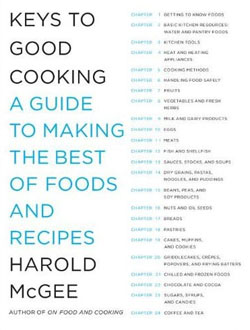 Keys to Good Cooking: A Guide to Making the Best of Foods and Recipes (to appear October 28th)
Keys to Good Cooking: A Guide to Making the Best of Foods and Recipes (to appear October 28th)
by Harold McGee
In a mini Q&A with NY Times in 2008 Harold McGee said the following about this book: “I’ve heard from many cooks that while they value the scope and depth of “On Food & Cooking,” when they need practical help with a specific technique or ingredient it’s often hard for them to locate the information. So my next book will be nothing but practical information and directions, concise and brief.”
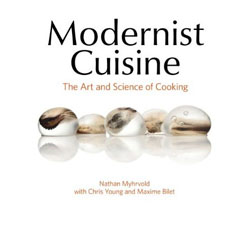 Modernist Cuisine (to appear December 1st)
Modernist Cuisine (to appear December 1st)
by Nathan Myhrvold, Chris Young and Maxime Bilet
With 2200 pages spanning 5 volumes this will be the reference work on modern cooking for years to come. Nathan Myhrvold has had a team of 20+ people working in his labs. Watch this 26 min video of the labs to get an impression of the work they’re been doing there. I’ve the book previously here and here.
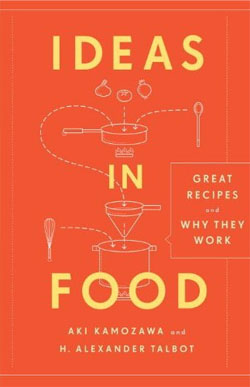 Ideas in Food: Great Recipes and Why They Work (to appear December 28th)
Ideas in Food: Great Recipes and Why They Work (to appear December 28th)
by Aki Kamozawa and Alexander H. Talbot
The food blogging couple Aki Kamozawa and Alexander H. Talbot have taken the step into the printed world. Through their blog they have taken a tremendously open and sharing approach, blogging about their ideas, inspiration and creativity – even long before they turn into specific dishes. And always accompanied by very nice photos. Not much information is available about the book yet, but I will update as soon as I find more. The title suggests that it’s style may be a bit similar to Hervé This’ book Révelations gastronomiques (no English translation yet that I’m aware of, but it’s available in German as Kulinarische Geheimnisse – it’s basically a compilation of 55 recipes with scientific explanations inbetween the recipe directions).
So to sum it up, the list of interesting books for 2010 is as follows:
Sous Vide for the home cook
Everything But Espresso: Professional Coffee Brewing Techniques
Coffee with Tim Wendelboe
In Search of Total Perfection
Heston Blumenthal: The Biography of the World’s Most Brilliant Master Chef
Cooking Sous Vide: A guide for the Home Cook
Cooking for Geeks: Real Science, Great Hacks, and Good Food (to appear August 3rd)
Heston’s Fantastical Feasts (to appear September 28th)
NOMA (to appear October 6th)
Keys to Good Cooking: A Guide to Making the Best of Foods and Recipes (to appear October 28th)
Modernist Cuisine (to appear December 1st)
Ideas in Food: Great Recipes and Why They Work (to appear December 28th)
Any books I forgot to mention? I will update the list as new books appear.

You left out Nathan Myrhvold’s book, but no one will be able to afford it anyway.
As I mentioned in the introduction I’ve already blogged about them in a separate post 🙂 But I did include it in the list at the end of the post – and now I’ve also included the covers to make the list complete.
Thanks for the update. I can certainly recommend Wendelboe’s book, especially for the non-technical audience. However, it tains a lot of relevant knowledge for anyone (although de doesn’t always explain why things are as they are.
How odd to realize that outside of Wendleboe’s book (which I will have to evaluate) and Total Perfection (because I have the original two hardcover volumes), I have already either acquired or ordered every single title on this list.
“Taste Buds and Molecules: The Art and Science of Food With Wine” is now available in English. Try Amazon Canada about $25 can
Gord: Thanks – I added it to the list. I’ve really waited for a translation of that book!